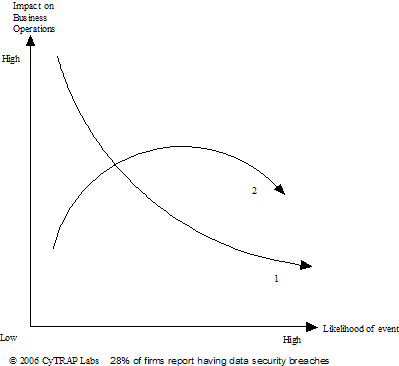a. Setting up ICS or IKS
Releated to this topic:
| CyTRAP Labs can undertake the internal audit in part or in total, support you in setting up and adjusting your internal audit form an opinion on the effectiveness and adequacy of both the internal control system and the internal audit. As well, an internal control system (ICS) or internes Kontrolsystem (IKS) can be designed and implemented and administered on behalf of the client. CyTRAP Labs, ensures that all the necessary policies, functions and procedures are dealt with in an appropriate, effective and cost efficient manner. |
| When acting in this capacity, CyTRAP Labs confirms any course of action that it will take regarding technology, security procedures, baseline measures and metrics with a client beforehand |
Section 404 of the Sarbanes-Oxley Act of 2002, Germany’s ‘Control and Transparency in Business Act’ (KonTraG) or Switzerland’s – CH CO 728a, 2 and CO 728b, 1 require the management of public and in some cases privately held corporations to:1) prepare an annual report in writing on internal control over financial reporting and
2) have an external auditor to attest to management’s conclusions about the effectiveness of the internal controls.
The internal audit is used to safeguard the company’s assets and is, therefore, a main element of corporate governance.
_what is needed to operate a well-structured ICS?_
Fraudulent conversion, offer or price agreements, as well as possible theft, manipulation of the balance sheet, breach of fiduciary duty, corruption and fraud pose a serious threat to companies of all sectors and sizes. By deploying adequate preventive measures, companies can significantly decrease this risk.
However, to ensure the quality of accounting and financial information, it is necessary to address information technology and security issues. Particularly regarding the conditions
under which financial data and information is
– recorded,
– stored,
– available, and
– protected.
The implementation of a structured internal system of controls always comes at a cost. Because of this one must ensure that the controls put in place provide added value in terms of effectiveness and efficiency in addressing an identified risk. Duplication of tasks and the performance of superfluous controls that fail to address a valid risk should be avoided. The application of automated controls, as appropriate, should be considered to replace manual procedures that are lengthy and error-prone.available.Demonstrating accountability, controls that are working.

What helps in making a powerful economic case and getting support from top management is to assess and define the critical activities that require conntrols to limit the risks in having disasters affect operations. This is outlined in the above Figure whereby very few ‘disasters’ can result in highly negative and costly effects upon operations. An intelligent internal control system provides information that helps manager to keep taps on important parameters related to these critical risks.
_internal control system – set-up and implementation_
In accordance with the Corporate Governance Code (e.g., Dutch, Swiss, German or UK versions or laws pertaining to this issue), the Management Board is responsible for the adequacy and effectiveness of the internal risk management and control system of the company. It reports on, and accounts for, the internal risk management and control systems to the Audit Committee and the Supervisory Board, and issues a statement on the system’s effectiveness and adequacy.
The control system can be built by first determining the resource requirements, recruiting staff, and developing an operating plan. The establishment of control activities over company processes must be such that it will ensure that they run efficiently and at lowest possible costs.
Information technology and information management experts play a key role in controlling compliance with the internal control procedures of operations.
An assessment of the principal features of the control systems must be carried up. As well, setting out guidelines on what the organization should do as part of a risk control assessment are part of the set-up process.
_education programs_
Implementing effective control procedures requires training of the organization’s staff involved in the development of or operations of the internal control system.
For more information about other tasks that can be outsourced see:
_EFFICIENCY_
Get better information sent to your e-mail in-box to save time and be able to archive these tips and tricks in upcoming weeks. just provide us with your e-mail address below.
Pingback: CyTRAP Labs - EU-IST - we help protect since 2000 » Blog Archive » Research that matters - ISAF UK - director’s guides for managing information security risk